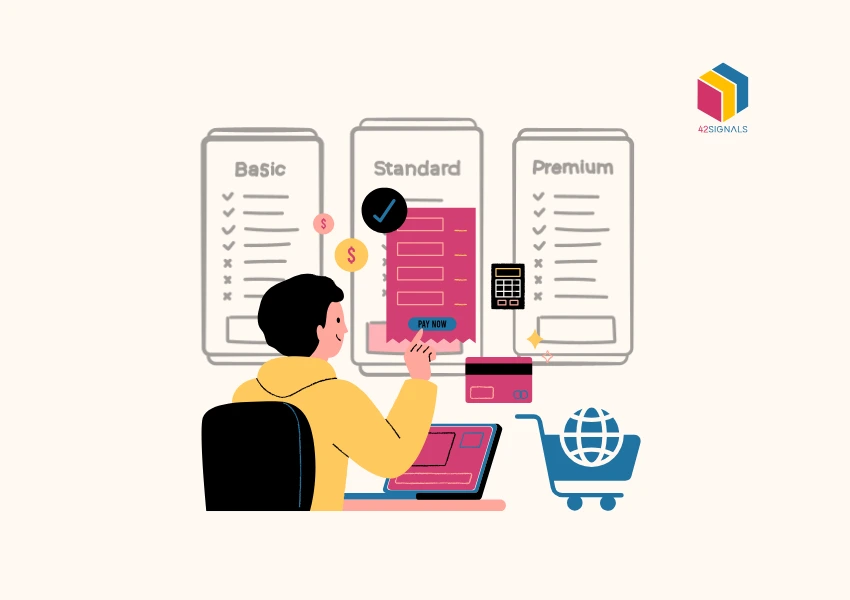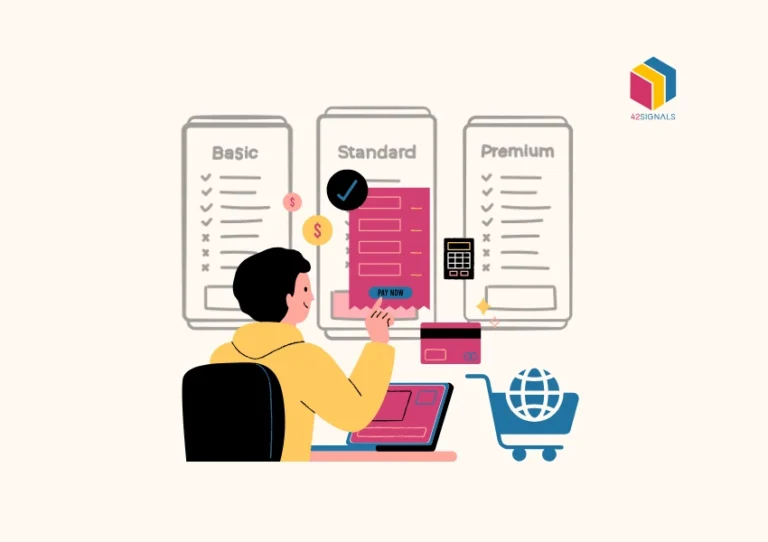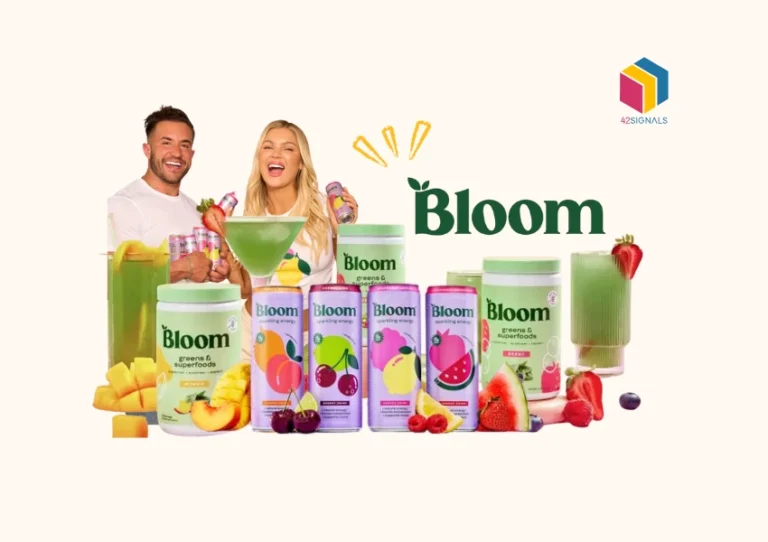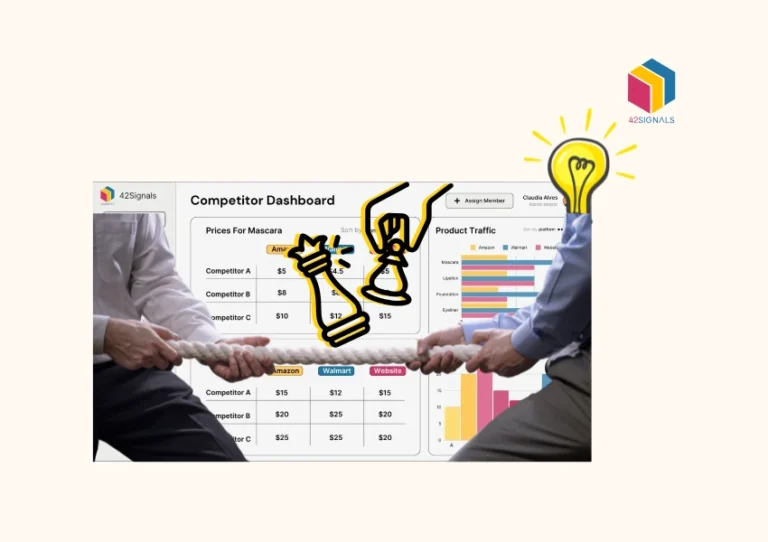Table of Contents
Toggle** TL;DR ** In 2025, the key to success for e-commerce subscription models will shift from simply acquiring customers to retaining them by fighting subscription fatigue through advanced AI and hyper-personalization. As the market matures, businesses must leverage AI to dynamically predict customer needs, proactively prevent churn, and move beyond generic offerings to deliver deeply tailored experiences. The winners will be those who use these tools to create indispensable, flexible, and valuable services that seamlessly integrate into the customer’s life, thereby boosting customer retention and maximizing lifetime value, ensuring their subscription business model remains relevant in a crowded and discerning marketplace.
The subscription economy has fundamentally reshaped the commercial landscape, transitioning from a niche commerce model to a dominant force in global retail. What began as a convenient method for acquiring media and software has expanded into a vast ecosystem encompassing everything from curated apparel and gourmet foods to essential household goods. This paradigm shift to subscription models offers businesses a compelling proposition: the stability of predictable recurring revenue and a direct, enduring relationship with the customer.
However, market maturity brings new challenges. The initial consumer enthusiasm for the novelty of subscription boxes has been tempered by a phenomenon known as subscription fatigue.
Customers, now inundated with monthly commitments for everything from entertainment to toothpaste, are becoming more discerning. The bar for value has been raised significantly. Simply offering a product on a recurring schedule is no longer sufficient. The defining challenge for e-commerce subscription models in 2025 is not customer acquisition, but customer retention through the demonstrable and ongoing delivery of value.
Download our free retail pricing strategies guide
The Current Landscape of Subscription Models
The growth trajectory of the subscription e-commerce market has been nothing short of remarkable. According to analysis by McKinsey & Company, the market has experienced growth exceeding 100% annually over the past five years. This expansion was fueled by a potent value proposition for both businesses and consumers. Companies gained a stable foundation of recurring revenue, insulating them from the volatility of one-time transactions and providing invaluable data on consumer behavior. For customers, the appeal was rooted in convenience, personalization, and often, the delight of discovery.
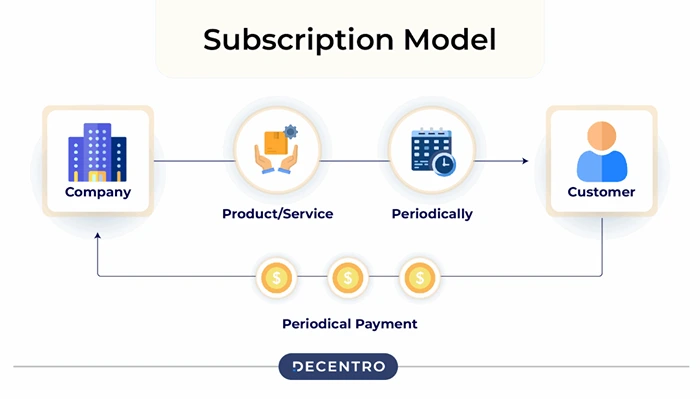
Image Source: Decentro
This very success, however, has led to a saturated marketplace. Consumers now manage a portfolio of subscriptions, and their tolerance for mediocre or redundant offerings is low. The concept of subscription fatigue emerges when the cognitive load of managing multiple subscriptions and the financial burden of recurring payments outweigh the perceived benefits. Customers are conducting frequent cost-benefit analyses, and services that fail to consistently justify their cost are swiftly canceled.
The key metric for success is evolving from subscriber count to subscriber longevity. The focus is now squarely on customer retention and maximizing customer lifetime value. CLV represents the total revenue a business can reasonably expect from a single customer account throughout their relationship.
A higher CLV translates to greater profitability, increased customer loyalty, and a more sustainable business model. In this environment, retention is not merely a function of customer service; it is a function of product strategy, data intelligence, and customer experience design.
Ready to Take the Next Step?
See how our solutions can help you achieve your goals and drive measurable results.
Deconstructing the Subscription Framework: Core Models and Their Evolution
To understand the future, one must first understand the foundational frameworks that underpin most subscription services. While hybrid models are emerging, most e-commerce subscription models can be categorized into three primary types, each with a distinct value proposition.

Image Source: Code Store Solutions
The replenishment model is arguably the most straightforward and utility-driven. It is designed to automate the purchase of consumable goods that are used regularly. This model eliminates the task of remembering to reorder commodities like razor blades, vitamins, or pet food. Its value is almost purely based on convenience and reliability. Services like Amazon’s Subscribe & Save have mastered this model by layering in cost savings for the subscriber, creating a powerful incentive to maintain the subscription.
The curation model is built on the pillars of discovery and expertise. Instead of convenience, it sells a curated experience. Subscribers receive a selection of products tailored to their tastes, often within a specific vertical like beauty, fashion, or food. The success of this model hinges on the perceived skill and taste of the curators. Companies like Stitch Fix leverage data and human expertise to deliver personalization that feels authentic and valuable. The risk here is misalignment; if the curation feels generic or misses the mark too frequently, the subscription is quickly deemed unnecessary.
The access model offers value through exclusivity and privilege. Subscribers pay a fee to gain members-only benefits, which can include discounted pricing, early access to new products, exclusive content, or VIP services. This model is less about a physical product and more about fostering a sense of community and elite status. It effectively creates a moat around a brand’s most loyal customers. The access subscription model is powerful for building brand advocacy, as it makes customers feel like valued insiders rather than mere consumers.
Download our free retail pricing strategies guide
The Integral Role of Artificial Intelligence in Modern Subscription Models

In 2025, artificial intelligence has become the operational backbone of successful subscription services. AI is the engine that powers scalability, predictability, and a deeply responsive customer experience. Its application is transforming every facet of the subscription business model.
One of the most significant applications of AI is in dynamic forecasting and logistics optimization. For replenishment-based services, sophisticated algorithms analyze a customer’s usage patterns, frequency of orders, and even external factors like seasonal changes to predict future need with high accuracy.
This allows for smart, adaptive delivery scheduling. The system can proactively suggest delaying a shipment if it predicts a surplus or expediting one based on increased usage, thereby preventing stock-outs. This creates a seamless, “just-in-time” experience that feels intuitive and valuable to the customer.
Furthermore, AI is revolutionizing churn prediction and intervention. Machine learning models can process vast datasets of user behavior to identify subtle signals that indicate a subscriber is at high risk of canceling.
These signals might include a decline in login frequency, a pattern of skipping deliveries, or decreased engagement with marketing communications. By flagging these at-risk accounts, businesses can shift from a reactive to a proactive retention strategy.
Instead of waiting for a cancellation request, they can engage these customers with targeted interventions, such as personalized offers, direct check-ins from customer success teams, or requests for feedback. This proactive approach demonstrates that the company values the subscriber’s business and is attentive to their needs.
Hyper-Personalization as the Primary Engine of Customer Retention
If AI provides the analytical capability, hyper-personalization is the strategic output that directly drives customer retention. In the context of subscription fatigue, personalization is the most powerful tool for demonstrating ongoing value and justifying a recurring expense. It is the process of using data and insights to tailor every aspect of the customer experience to the individual, not just a broad segment.
True personalization begins at the initial touchpoint. Modern onboarding processes are interactive and adaptive. A skincare subscription, for instance, might use a detailed quiz that evolves based on previous answers, gathering data on skin concerns, environmental factors, product preferences, and even lifestyle habits. This level of detail ensures the initial curation is highly relevant, setting a positive tone for the relationship.
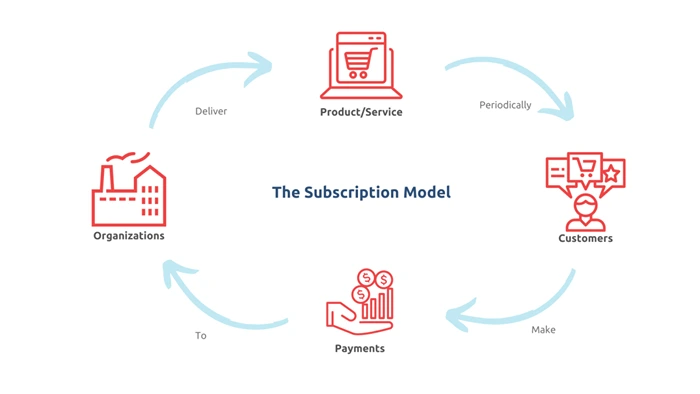
Image Source: Upstart Commerce
This commitment to personalization must extend throughout the entire customer lifecycle. For a curation model, it means the service should evolve based on continuous feedback. If a subscriber consistently rates certain types of products poorly, the algorithm should learn and adjust future selections in real-time. For a replenishment model, it could mean offering flexible tiering options or allowing easy swaps for products that a customer has grown tired of.
The ultimate goal is to create a service that feels less like a commercial transaction and more like a dedicated personal assistant. This deep level of integration into a customer’s life and routine creates significant switching costs.
The mental effort of finding an alternative that could offer the same level of tailored convenience is often enough to deter cancellation, even if the price point is premium. This is how hyper-personalization directly combats subscription fatigue and builds immense loyalty.
Ready to Take the Next Step?
See how our solutions can help you achieve your goals and drive measurable results.
Strategies for Cultivating Long-Term Subscriber Loyalty Program
Building a subscription model service that customers actively want to keep requires a multifaceted strategy that extends beyond the core product. Retention is woven into every interaction a customer has with the brand.
- Transparency and flexibility are non-negotiable components of trust. Customers must feel in control of their subscription. This means providing an intuitive self-service portal where they can easily pause, skip, modify, or cancel their plan without friction. While it may seem counterintuitive to make cancellation easy, this practice actually builds goodwill and trust.
- A customer who knows they are not locked in is more likely to give a service a try and, if the value is there, more likely to stay voluntarily. Opaque terms or difficult cancellation processes generate resentment and damage brand reputation irreparably.
- Adding layered value beyond the core product offering is another critical strategy. This is where the principles of the access model can be applied to other subscription types.
- Could a coffee subscription offer exclusive brewing tutorials or access to virtual cuppings with experts?
- Could a clothing service provide advanced style guides or early access to seasonal sales?
These value-adds elevate the subscription from a simple delivery of goods to a holistic membership program. They enhance the perceived value of the subscription and strengthen the emotional connection to the brand.
- Finally, a relentless focus on customer experience at every touchpoint is essential. The unboxing experience, the quality of the product, the responsiveness of customer support, and the clarity of communication all contribute to the overall perception of value. A single negative experience can be the catalyst for cancellation, while a consistently positive experience solidifies loyalty. Investing in high-quality, empathetic customer service is not an expense; it is a direct investment in retention and customer lifetime value.
Download our free retail pricing strategies guide
Future Trends in Subscription Models

The evolution of subscription models will continue beyond 2025, influenced by broader consumer trends and technological advancements.
- Sustainability is rapidly transitioning from a niche concern to a mainstream expectation. Consumers are increasingly making purchasing decisions based on a company’s environmental and ethical practices. Subscription services are uniquely positioned to lead in this area by optimizing packaging to reduce waste, implementing carbon-neutral shipping options, and carefully curating products from sustainable and ethical sources.
A subscription that demonstrates a genuine commitment to sustainability adds a powerful layer of value that resonates with a growing segment of the market.
- We will also see the proliferation of hybrid and flexible subscription models. The rigid boundaries between replenishment, curation, and access will continue to blur. Platforms may offer a base replenishment plan but allow subscribers to seamlessly integrate one-time curated purchases, gift items, or access to pop-up sales events.
This flexibility allows a single service to meet multiple customer needs, increasing its utility and embeddedness in the customer’s life. The future of subscriptions is modular and adaptable.
- The next frontier for AI lies in predictive and anticipatory experiences. We will see the rise of subscriptions that not only react to user behavior but anticipate needs before the user even articulates them.
This could involve pre-emptively shipping samples of new products that align perfectly with a user’s taste or adjusting a wellness regimen based on aggregated health data from wearable devices. The goal is to create a service so intuitive and valuable that it becomes an indispensable part of the subscriber’s lifestyle.
Ready to Take the Next Step?
See how our solutions can help you achieve your goals and drive measurable results.
Conclusion: Building a Subscription Service Designed for Longevity
The future of e-commerce subscription models is not defined by more subscriptions, but by better ones. The low barrier to entry that characterized the early days of the subscription boom is gone. Success in 2025 and beyond will be determined by a company’s ability to leverage technology not for technology’s sake, but to deliver genuine, tangible value to each individual subscriber.
The winning formulas will be those that prioritize deep customer understanding, radical flexibility, and an unwavering commitment to a flawless customer experience. The goal is to build a service that customers retain not because of inertia or complex cancellation processes, but because the service consistently demonstrates its worth and integrates seamlessly into their lives.
If you liked this article, read
The Loss Leader Strategy: A Risky Bet or a Genius Move for Customer Acquisition?
The Future is Here: An In-Depth Guide to Drone Food Delivery
Amul’s Dominance on Quick Commerce: A Multi-Category Assortment Masterclass
Frequently Asked Questions
A subscription model is a business approach where customers pay a recurring fee—usually monthly or annually—to access a product or service. Instead of making a one-time purchase, users subscribe for ongoing access or replenishment. This model is popular across industries, from media and entertainment to SaaS and e-commerce, as it provides predictable revenue for businesses and convenience for customers.
There are several types of subscription models, each catering to different business types and customer needs:
Fixed (Flat Rate) Subscription: Customers pay a consistent fee for access to a service or product bundle (e.g., Spotify or Disney+).
Tiered Subscription: Different pricing levels based on features or usage limits (e.g., SaaS platforms like Zoom or Canva).
Usage-Based Subscription: Pricing varies depending on how much the service is used (e.g., cloud storage or telecom plans).
Curation-Based Subscription: Customers receive a personalized selection of products regularly, often in the form of boxes (e.g., Birchbox or FabFitFun).
Replenishment Subscription: Consumable items are automatically shipped to customers at regular intervals (e.g., razor blades, pet food, vitamins).
Freemium Subscription: A basic version is offered for free, with paid upgrades for premium features (e.g., Dropbox or Grammarly).
Each type supports a different customer relationship and revenue strategy.
A subscriber model refers to a business framework where the value exchange is based on users becoming ongoing subscribers rather than one-time buyers. In this model, the focus is on acquiring subscribers, retaining them through continuous value, and increasing customer lifetime value. It’s not just about selling a product—it’s about building a long-term relationship through consistent engagement, updates, or content delivery.
This model is heavily used in digital services, media, software, and content platforms where access is the product itself.
Yes, Netflix is a classic example of a subscription-based business model. Users pay a recurring monthly fee to access a library of streaming content, including movies, TV shows, and original series. Netflix’s success relies on providing continuous value to retain subscribers, rather than generating one-time sales. They offer tiered plans based on video quality and number of users, aligning with the tiered subscription type mentioned earlier
